Agricultural advancement happened pretty quickly in the Great Plains beginning in the late 19th Century. Innovation in irrigation technology made it possible for subsistence farming to occur with lots of shovel work and a nearby stream to divert water. Then the Reclamation Act made surface water sources accessible to more people, giving way to a farming industry. Next, engine technology made it possible to harvest groundwater in ways that had never before been seen. While windmills made it possible for early settlers to farm and live, they couldn’t draw enough water to sustain an industry.
This is what those early years of irrigation technology looked like when groundwater was drawn and dispersed with an engine. Credit to STEWARDING OUR AQUIFER
Photo Gallery
Photo – These photos were all the rage for postcards at the time. People used them to send word back to families on the East coast that they’d “made it.” This postcard made it to a brother in Schenectady, NY from Scott County Kansas. (1910)

...
Photo – Another postcard from Hereford, TX. 1200 Gallons per minute. (1918)
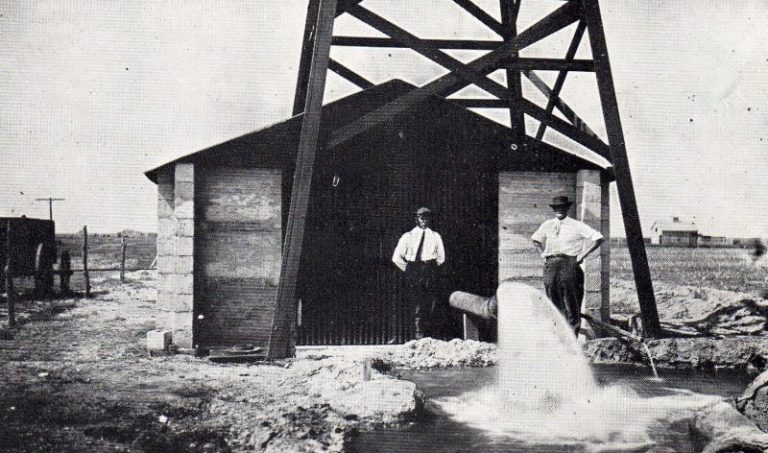
...
Photo – Belt Powered Oil Engine Pump. (1920)
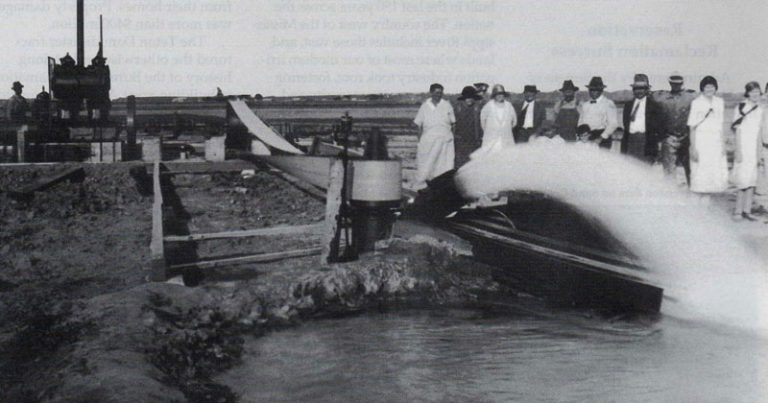
...
Photo – Caterpillar powered, belt driven vertical shaft pump. (1925)
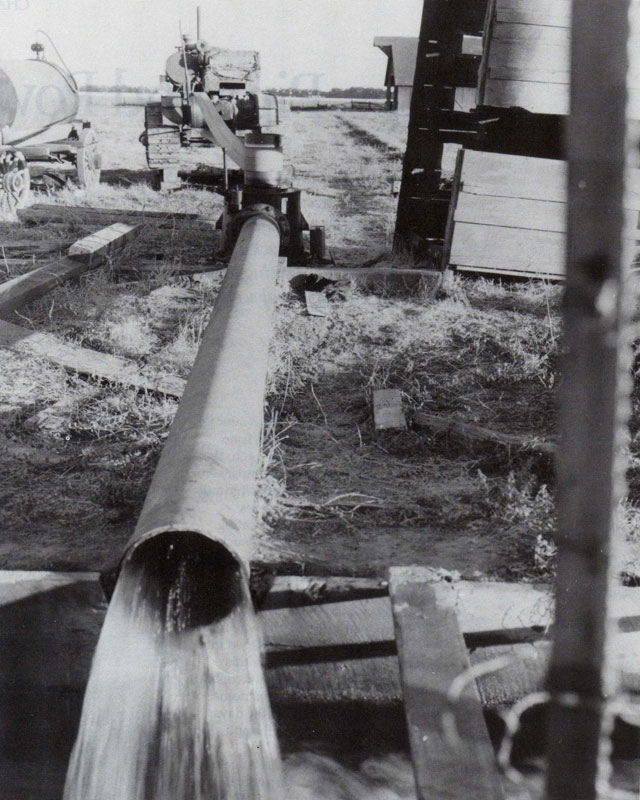
...
Photo – Harvey Firestone and Henry Ford talk new innovation in industrial agriculture. Firestone created the side-wheel sprinkler system pictured. (1930)
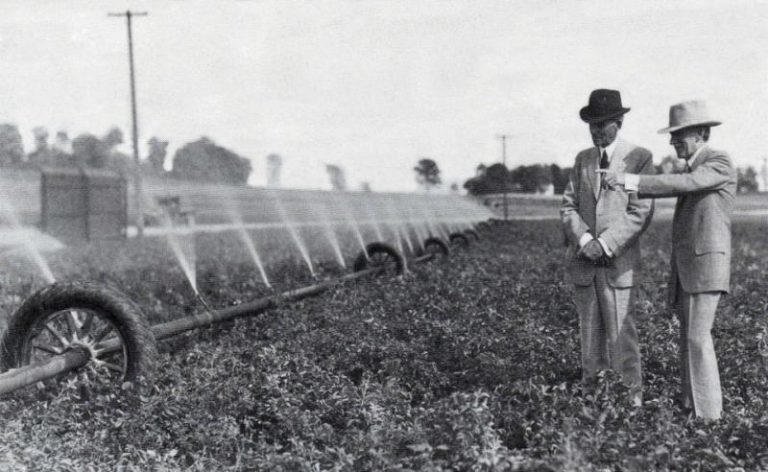
...
Photo – Flood irrigation wasn’t finished overnight. People still used it as pumps and sprinklers were getting cheaper, better, and more efficient. (1935)
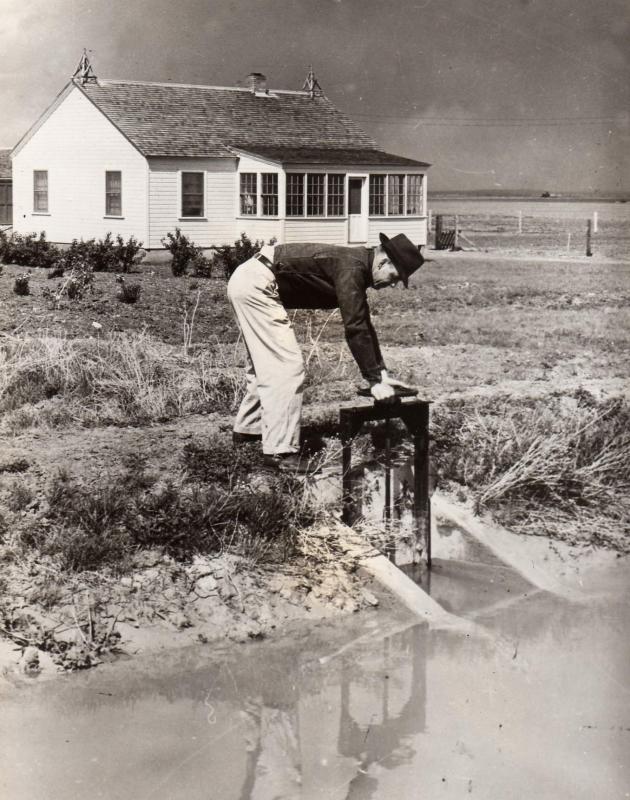
Photo – 1938
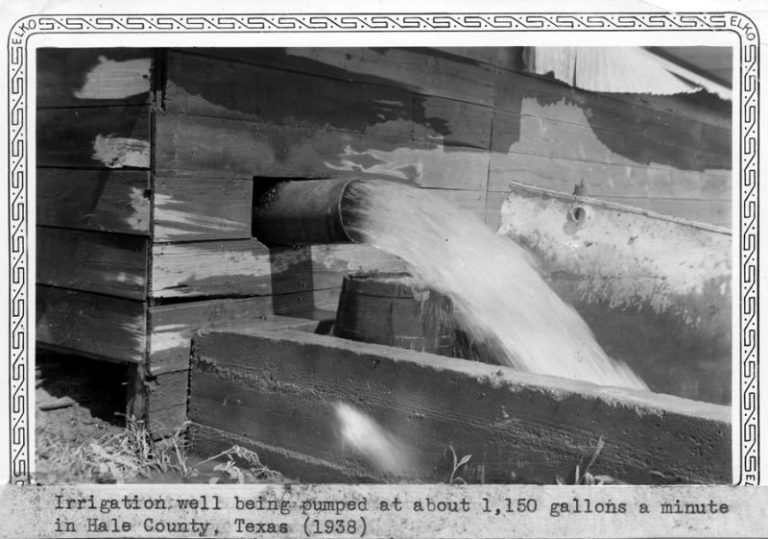
Photo – Portable irrigation pump. Home-made. California (1938).
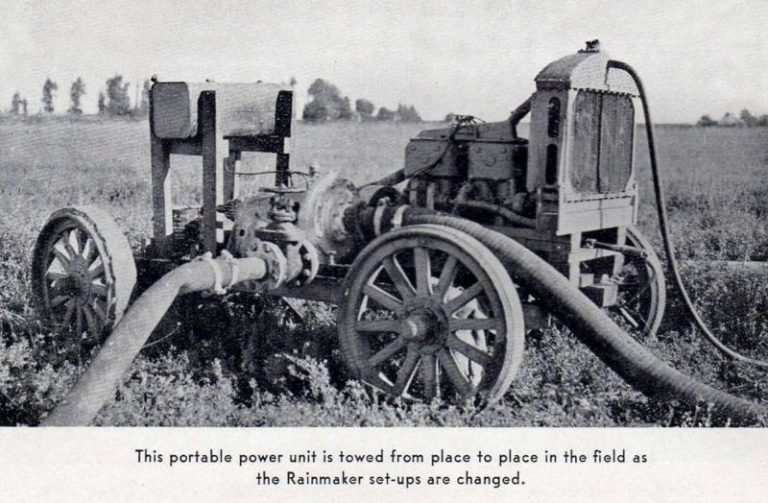
Photo – PTO driven portable irrigation pump. California (1938)
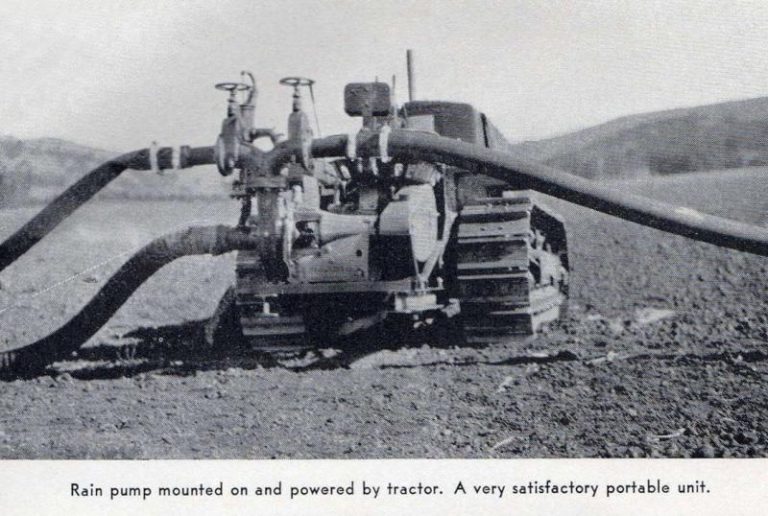
Photo – New lightweight aluminum comes along after WWII. (1946)
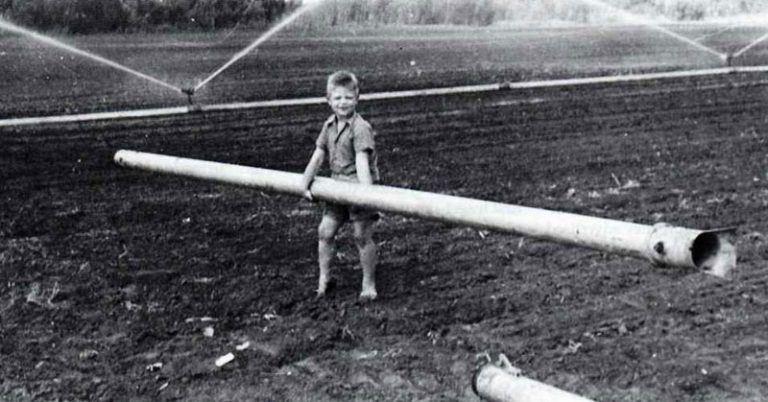
It’s been said that war is the mother of invention, and in the case of irrigation technology that’s true. While diesel technology was being implemented and used for farming, it wasn’t viable for the masses yet. It was too expensive, too heavy, too large, and too difficult to implement. By the end of WWII, technological innovations were more readily available to the common man and revolutionized the agricultural industry.